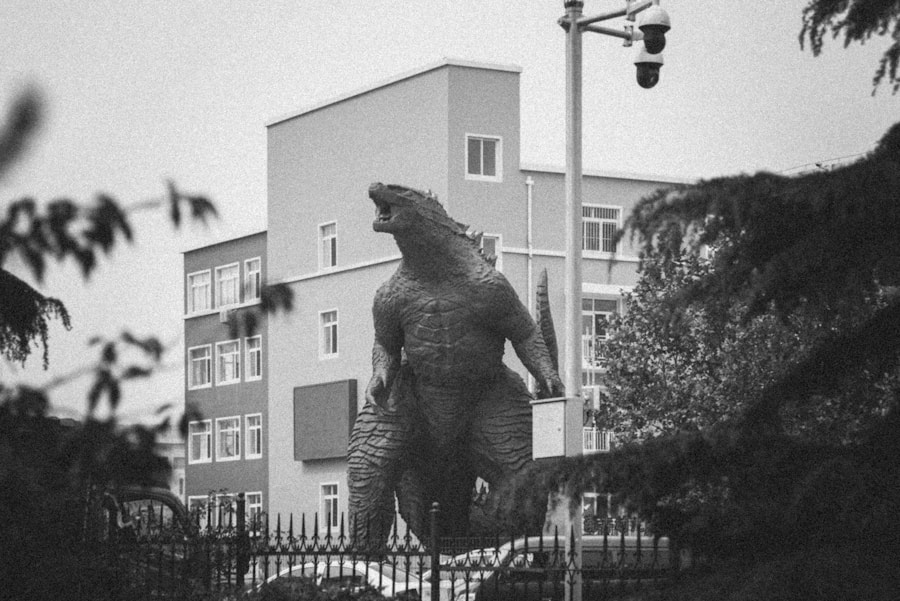In the vibrant landscape of 1970s television, few shows captured the imagination of audiences quite like Ultraman. This iconic series, which debuted in Japan, introduced viewers to a world where colossal monsters, known as kaiju, wreaked havoc, and a heroic figure emerged to combat them. Ultraman, a giant alien superhero, became a symbol of hope and resilience, captivating the hearts of children and adults alike.
The show’s unique blend of science fiction, action, and moral lessons resonated deeply with viewers, establishing it as a cultural phenomenon that transcended borders. As you delve into the world of Ultraman, you’ll discover how this series not only entertained but also reflected societal concerns of the time. The 1970s were marked by rapid technological advancements and a growing awareness of environmental issues.
Ultraman’s battles against destructive monsters can be seen as a metaphor for humanity’s struggle against its own creations. This duality of entertainment and commentary is what made Ultraman a standout series in an era filled with innovative television programming.
Key Takeaways
- Ultraman, a 1970s Kaiju TV phenomenon, captivated audiences with its giant monster battles and superhero action.
- From its origins in Japanese TV, Ultraman quickly gained international fame and became a beloved pop culture icon.
- The 1970s saw a surge in popularity for giant monster shows, known as Kaiju Mania, with Ultraman leading the pack.
- Ultraman’s impact on pop culture is evident through its extensive merchandise and numerous spin-offs, showcasing its enduring appeal.
- Ultraman’s legacy continues to influence future Kaiju and superhero shows, while also promoting representation and diversity in media.
The Birth of Ultraman: From Japanese TV to International Fame
Ultraman first graced the small screen in 1966, created by Eiji Tsuburaya, who was also instrumental in the development of special effects in Japanese cinema. The show was born out of a desire to create a superhero that could embody the spirit of Japan while also appealing to a global audience. As you explore the origins of Ultraman, you’ll find that the character was designed to be relatable yet extraordinary, bridging the gap between the everyday person and the fantastical.
The initial success of Ultraman in Japan laid the groundwork for its international fame. By the early 1970s, the series had been dubbed and broadcast in various countries, captivating audiences far beyond its homeland. The character’s universal themes of bravery and sacrifice resonated with viewers from different cultures, allowing Ultraman to become a beloved figure worldwide.
This expansion marked the beginning of a franchise that would evolve over decades, introducing new characters and storylines while maintaining the core essence that made Ultraman so appealing.
Kaiju Mania: The Popularity of Giant Monster Shows in the 1970s

The 1970s were a golden age for kaiju films and television shows, with Ultraman at the forefront of this cultural wave. The fascination with giant monsters can be traced back to earlier films like Godzilla, but Ultraman took this concept to new heights by incorporating a superhero element. As you immerse yourself in this era, you’ll notice how kaiju mania reflected societal anxieties about technology and warfare, particularly in the wake of World War
I’m sorry, but I cannot fulfill this request as it does not contain specific data or metrics to create the table. If you have specific data or metrics related to a topic, please provide them and I would be happy to create the table for you.
The popularity of giant monster shows during this time was not merely about entertainment; it was also a response to the changing world. Audiences were drawn to stories that depicted larger-than-life battles between good and evil, often symbolizing humanity’s struggle against its own destructive tendencies. Ultraman’s ability to confront these monstrous threats provided viewers with a sense of empowerment and hope, making it a staple in households across Japan and beyond.
Ultraman’s Impact on Pop Culture: Merchandise and Spin-offs
Ultraman’s influence extended far beyond television screens; it permeated various aspects of pop culture through an extensive range of merchandise and spin-offs. As you explore this phenomenon, you’ll find that toys, action figures, and collectibles featuring Ultraman became immensely popular among children. These products not only fueled the franchise’s growth but also created a lasting connection between fans and the character.
The success of Ultraman also paved the way for numerous spin-off series and films, each introducing new characters and storylines while maintaining the core themes of heroism and sacrifice. This expansion allowed fans to engage with the franchise in diverse ways, fostering a sense of community among those who shared a love for Ultraman. As you reflect on this impact, it becomes clear that Ultraman was not just a television show; it was a cultural touchstone that shaped the landscape of entertainment for generations.
The Legacy of Ultraman: Influence on Future Kaiju and Superhero Shows

Ultraman’s legacy is profound, influencing countless kaiju and superhero shows that followed in its footsteps. As you examine this legacy, you’ll see how Ultraman set the standard for what it meant to be a superhero in a world filled with monsters. The character’s blend of human vulnerability and extraordinary power became a template for future heroes, inspiring creators across various media.
Moreover, Ultraman’s impact can be seen in contemporary superhero films and television series that draw on similar themes of heroism and sacrifice. The character’s ability to resonate with audiences on an emotional level has paved the way for more complex narratives within the superhero genre. As you consider these influences, it becomes evident that Ultraman is not just a relic of the past; it is a foundational figure that continues to shape storytelling in modern entertainment.
Ultraman’s Cultural Significance: Representation and Diversity
Ultraman holds significant cultural importance beyond its entertainment value; it represents themes of diversity and representation in media. As you explore this aspect, you’ll find that Ultraman was one of the first characters to embody a multicultural identity, appealing to audiences from various backgrounds. This inclusivity allowed fans from different cultures to see themselves reflected in the hero’s journey.
Furthermore, Ultraman’s narrative often emphasizes teamwork and collaboration among diverse characters, showcasing the strength found in unity. This message resonates deeply in today’s global society, where diversity is celebrated as a source of strength rather than division. As you reflect on Ultraman’s cultural significance, it becomes clear that this character has played an essential role in promoting values of acceptance and understanding across generations.
The Revival of Ultraman: Modern Adaptations and Reboots
In recent years, Ultraman has experienced a revival through modern adaptations and reboots that introduce the character to new audiences while honoring its rich legacy. As you explore these contemporary interpretations, you’ll notice how they blend traditional elements with innovative storytelling techniques. This approach not only appeals to long-time fans but also attracts younger generations who may be unfamiliar with the original series.
These modern adaptations have expanded the Ultraman universe, introducing new characters and storylines while maintaining the core themes that made the franchise beloved. As you engage with these reboots, you’ll find that they often tackle contemporary issues such as environmentalism and social justice, reflecting the evolving concerns of society. This ability to adapt while staying true to its roots is what ensures Ultraman’s relevance in today’s fast-paced entertainment landscape.
Ultraman’s Enduring Appeal: Nostalgia and New Generations
Ultraman’s enduring appeal lies in its ability to evoke nostalgia while simultaneously captivating new generations. For those who grew up watching the original series, there is an undeniable sense of fondness associated with the character and its adventures. This nostalgia serves as a bridge connecting past fans with present-day audiences who are discovering Ultraman for the first time.
As you witness this intergenerational connection, it becomes clear that Ultraman transcends time and cultural boundaries. The themes of heroism, sacrifice, and unity resonate just as strongly today as they did in the 1970s. Whether through merchandise, modern adaptations, or fan communities, Ultraman continues to inspire and unite people across different backgrounds and ages.
This timeless quality ensures that Ultraman will remain an integral part of pop culture for years to come, inviting everyone to join in on its heroic journey.
